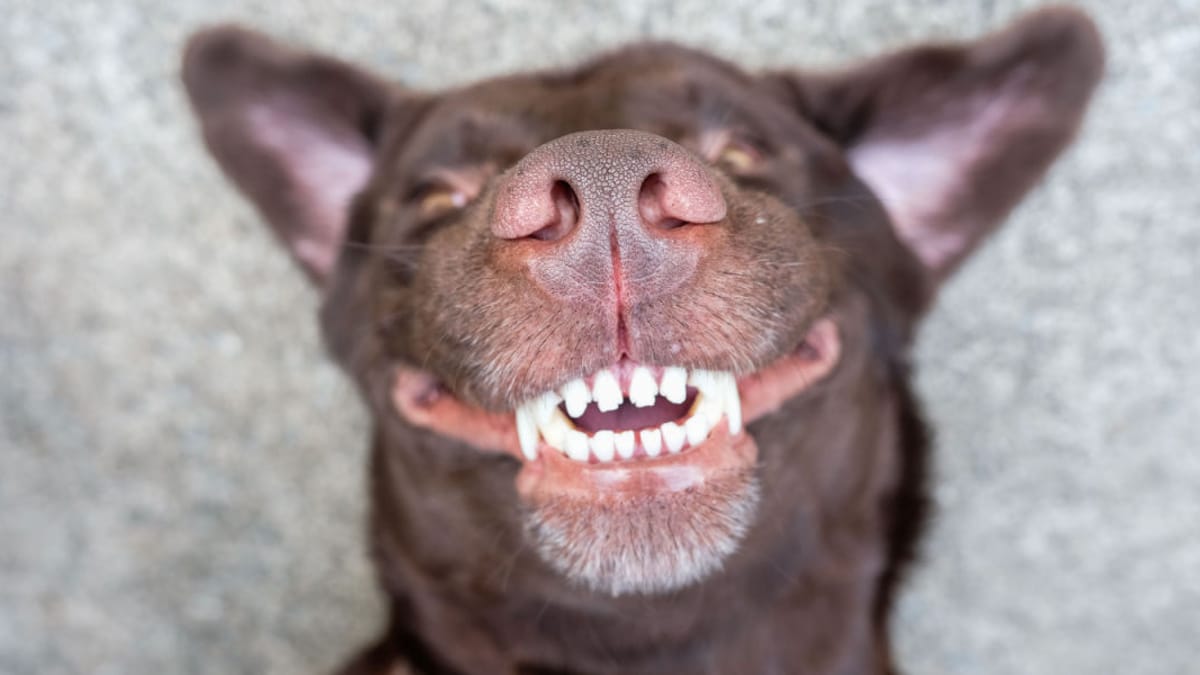On the one hand, the dog’s teeth are a bit scary, but on the other, they are essential for the well-being of the animal and for this very reason they must be treated with care, without underestimating them.
A periodic check, in fact, and some daily precautions, ensure that the dog teeth always stay healthy and ensure good chewing and digestion, fundamental things for dogs, as well as for humans. Here’s everything you need to know.
The dentition of the adult dog and puppies
Like humans, dogs are also born without teeth, which they develop 15-20 days after birth and which grow until they are four months old. A gradual and relatively fast process which is part of the animal’s growth and which takes place without particular problems.
Fundamental from the first weeks, the teeth are used for biting, but above all and mainly to eat and feed and the most delicate phase of their formation occurs precisely when the four-legged ones pass from the milk ones to the adult ones, during the period of teeth change.
How does a dog’s teeth change according to age?
The moment that corresponds to the change of the dog’s teeth occurs around four months life of the puppy, a phase in which the latter passes from having milk teeth, therefore fewer, softer and smaller, to having the definitive set of teeth, that of an adult animal.
When does the dog finish teething?
The teeth of the dog are formed over several months: around 3-4 months the first incisors begin to emerge, then at 5 months it is the time for the canines, then we move on to the premolars, up to 7 months with the molars .
The process can be slightly painful and it seems (it is most often noticed) that dogs get into the passing habit of nibble hardertoys and whatever happens to them, a gesture they make perhaps to give relief to sore gums.
What if permanent teeth erupt prematurely?
Sometimes the change of teeth does not go completely smoothly and it can happen that the definitive teeth come out without the relative milk teeth having fallen out.
In this case it is appropriate contact your vet to avoid any future problems due to incorrect jaw occlusion.
How many teeth does a dog have?
I dog deciduous teeth (i.e. those that develop at the beginning and then fall off) are 28: 12 incisors, 12 premolars and 4 canines. The teeth change phase of the puppies finds its complete completion around the end of the seventh month with a set of teeth that is distinguished by the total presence of 42 permanent teeth.
On the upper part of the dog’s dentition there are: 6 incisors, 2 canines, 8 premolars and 4 molars; in the lower teeth, on the jaw, there are instead the same number of incisors, canines and premolars, with two more molars than in the upper part.
How to brush your dog’s teeth?
There are many ways to preserve, care for and keep your dog’s teeth healthy. Usually on the market there are sticks with a particular anatomical shape, which adapt perfectly to the teeth and sanitize them, penetrating deeply.
Furthermore, you can brush Fido’s teeth, just as you do for a man, but with an enormous dose of patience. First of all it is convenient accustom the animal to this practice since he was a puppy, so that over time everything becomes easier.
How to brush your dog’s teeth, then? You need a specific toothpaste for dogs, as well as an ad hoc toothbrush, to be changed periodically and above all according to the growth of the puppy over the months.
A basin of warm water is then needed to rinse the dog’s teeth. To ensure that the animal accepts the treatment calmly, it is best to let him “taste”, before proceeding, the toothpaste, so that he gets used to the taste and then, calmly and carefully, brush the back teeth first (harder to reach) and then move on to the rest of the dentition.
You can also brush Fido’s teeth every day, but in order not to subject the animal to unnecessary stress, it is better to do it at longer intervals, letting the practice become a game rather than an obligation.
The health of the dog’s teeth
Dogs are omnivores, but consuming a lot of meat they use their teeth in a limited way for chewing and more for “rip“. The masticatory act seen in this way highlights the importance of gum health that determine dental stability. A potential inflamed gum causes pain and chewing difficulty.
This is to say that the health of the dog’s teeth starts from gingival health and hygiene. Gingival stability is achieved with a correct food format (like croquettes) which avoid potential mechanical risks. The mechanical risks for the gums can arise from the administration of home diets with the use, for example, of meat with bones that can damage the gum.
In the same way, dental hygiene understood as periodic cleaning of our four-legged teeth guarantees us buccal health at 360°.
Summing up, we will have an animal with good teeth at the time when power is handled well and hygienic interventions on the tooth and gums.
—
Article reviewed by:
Joseph Terlizzi
Veterinary doctor

